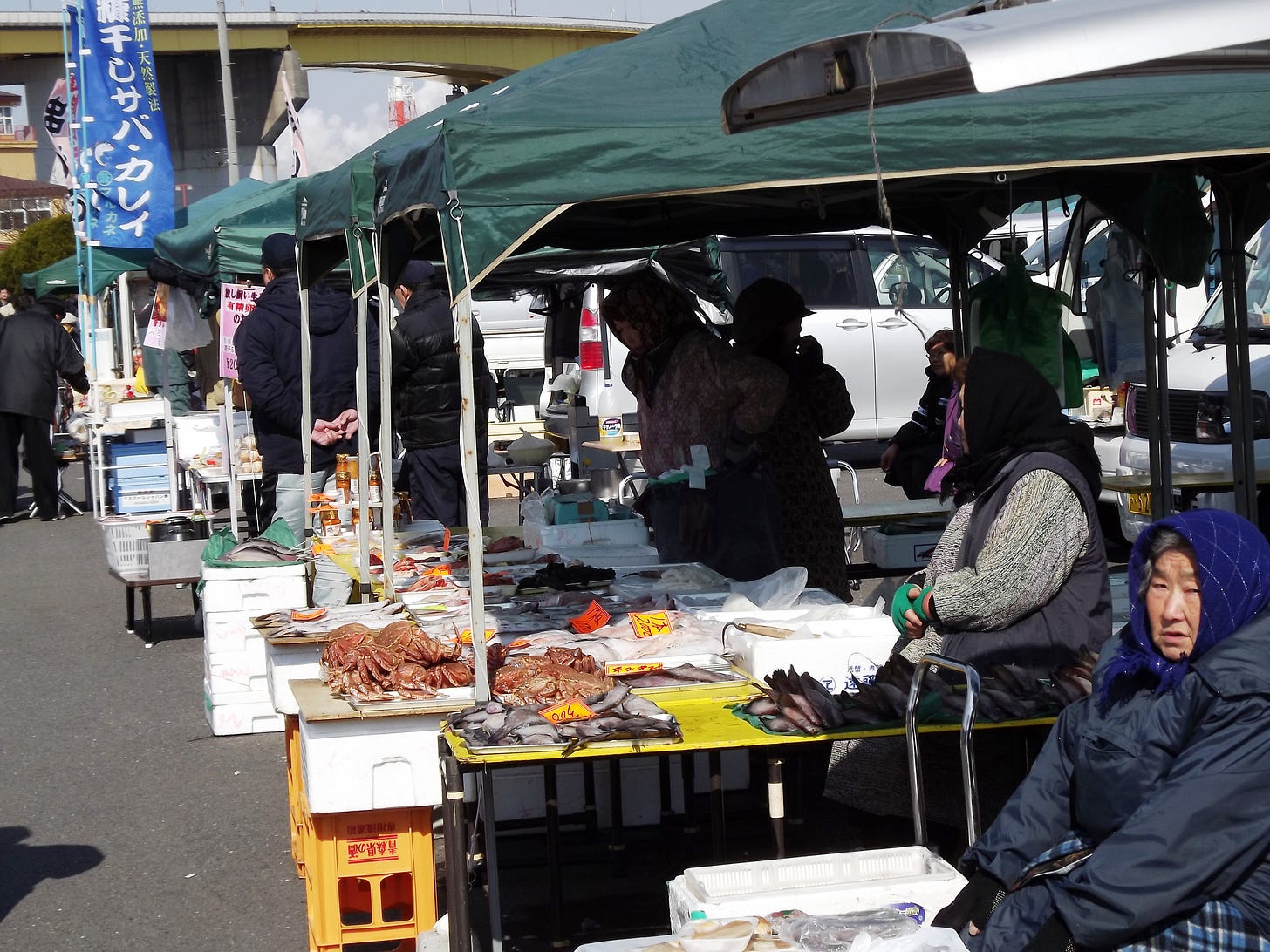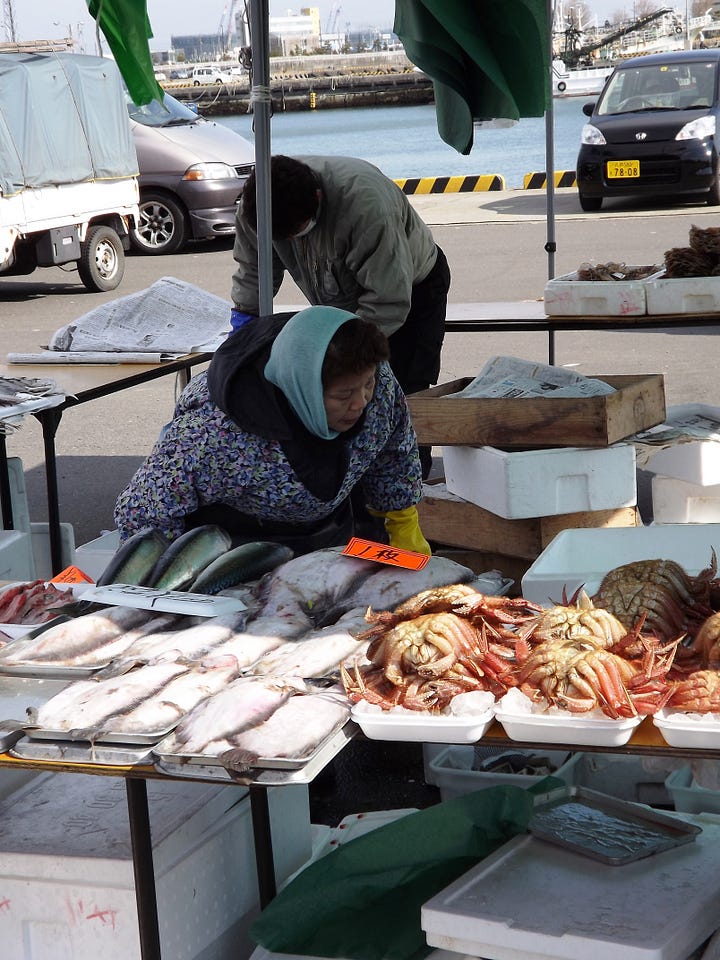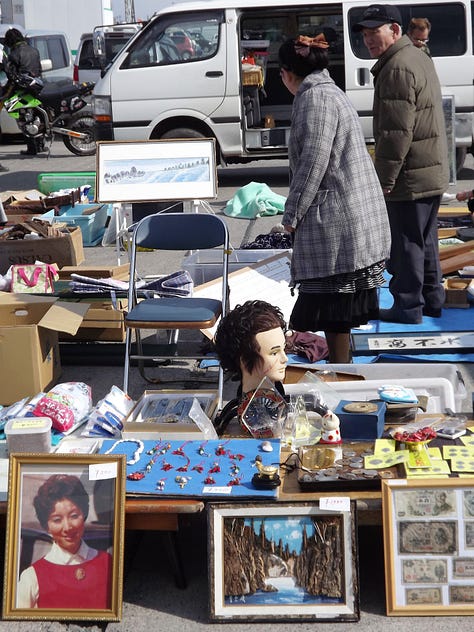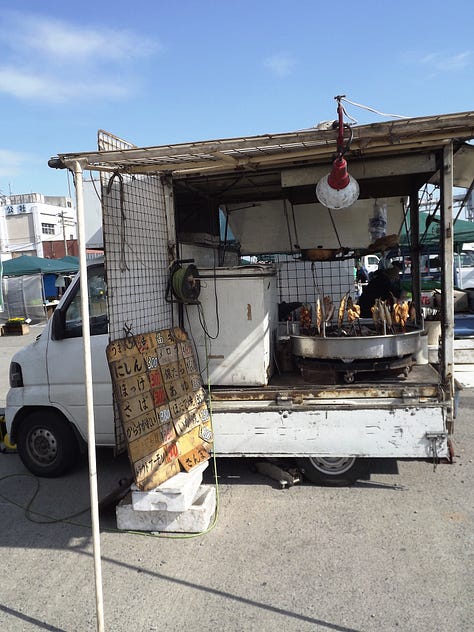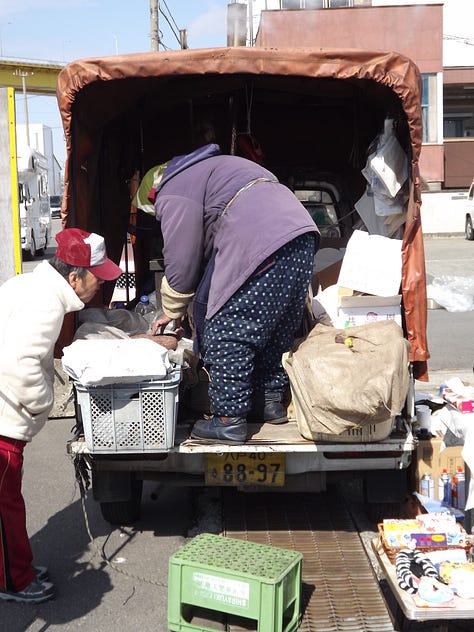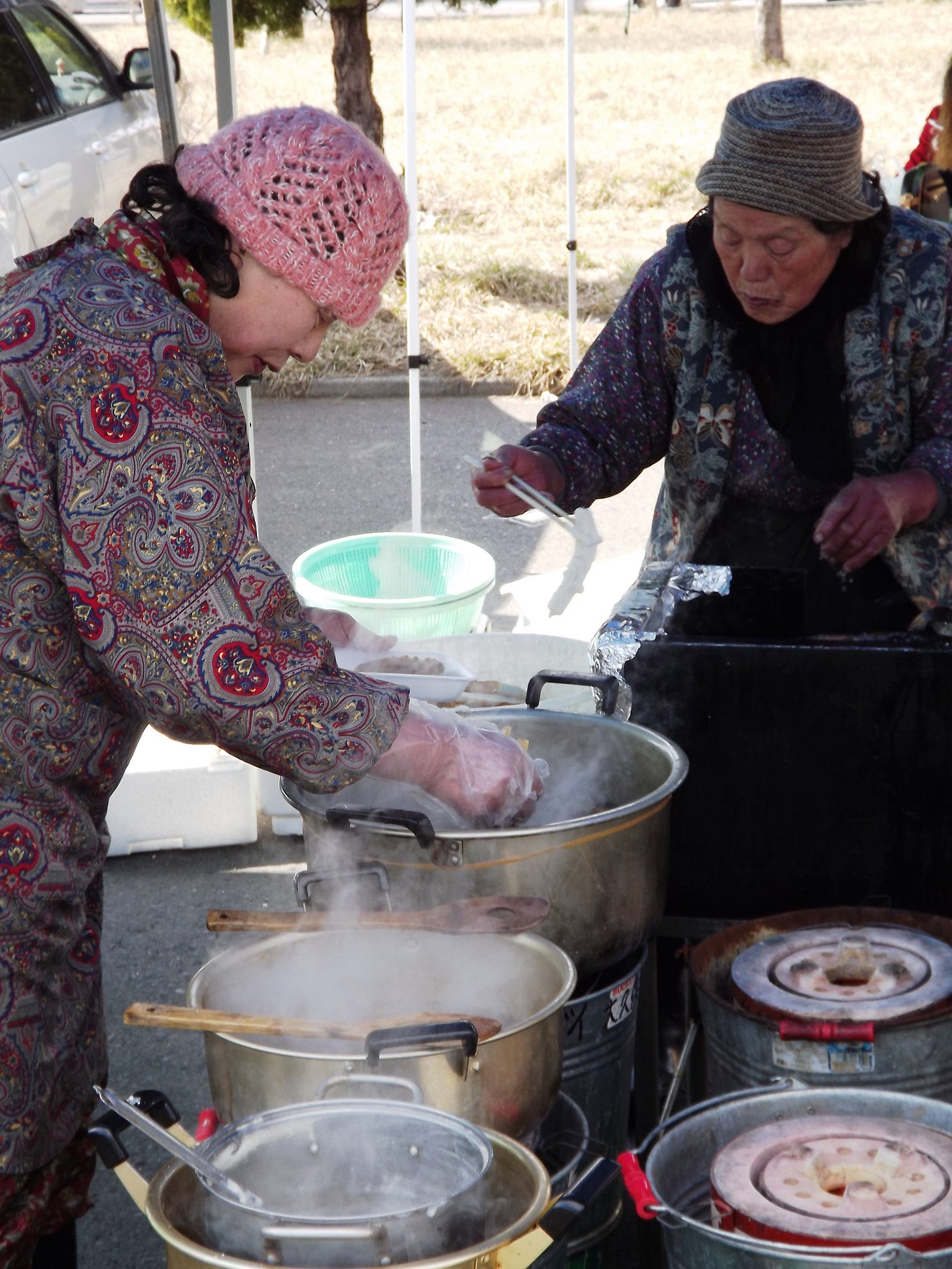The Salted North
Okan, Brixton Village, London

My order has been taken and I’m excited for what’s to come. A pint of Asahi is already going down well. It’s a little after twelve on a fairly nondescript Tuesday in July. I can’t hear the rain on the discoloured glass rooftops covering Brixton Village, the drum lost behind the comings-and-goings echoing round the market.
I’m one of only a couple of early diners. The miso soup quickly arrives rolling with steam, strips of tofu skin floating on its surface—all umami and notes of the sea. Service must have started as right on time a chap appears with a trolly carrying kegs of beer. The server does her best to attend to him, exchanging empties for full, while keeping an eye on the food landing on the pass and potential guests weighing up the menu by the door.
Sitting outside Okan amongst the many bright colours of the Village is like falling into a rainbow that smells wonderful. I know I’m a long, long way from Osaka but everything about this small counter restaurant, the like to be found all over Japan, sends me tumbling over memories of the East.
Japan is a country that changes you. It stays with you long after departing Narita Airport. I didn’t visit Osaka when I travelled to the country in 2012. My time was mostly spent in Hachinohe, a port city in Aomori, a prefecture in the northern part on the main island of Honshu. I was staying with my good friend Joe, who was living and working in the city. He went off each day to teach english in a local school, and I roamed the puzzle of streets while writing a novel set in feudal Japan that, perhaps for the best, has never been bound.
My Okonomiyaki has been placed before me—a savoury pancake with shredded cabbage and spring onions folded into it, finished with Okan’s special brown sauce and mayonnaise. Normally topped with dancing fish flakes, I recall markets and rows of fish hanging up to dry, the paper-thin flakes shaved from them to be sold in huge sacks. This is why hospitality, whether I’m working the floor or eating out, will always remain as much a portal to another culture or space in time as anything else. It captures the restless adventures of life that have settled into a routine under London skies. From The Floor is my way to travel while staying still.


I arrived in Hachinohe severely jet lagged and travel weary from catching a night bus north immediately after landing. Joe had left a bus ticket with tourist information at the airport along with a scribbled map of how to get to his apartment when I arrived in the city (the crime rate was so low that he never locked his door or chained his bike). The place where I disembarked was quiet and shuddering with cold at the tail-end of a tough winter, with the scars and trauma left by the 2011 tsunami still visible around the harbour (Although terrible, Hachinohe escaped the utter devastation befalling shorelines further south). I dropped my backpack after opening the door to Joe’s apartment and stood in this unfamiliar kitchen looking out the window. It seemed hard to comprehend where I was and how I had got there.
Joe returned home from school freshly shaven, wearing a shirt, and having learned a respectable chunk of the language in just a few months. We headed out that first evening and I have never had nights so long or eventful since.
We began and ended our overdue reunion along the narrow food-centric alleyway known as Miroku Yokocho, in one of the sliding door joints smaller than a shipping container. Shokudos can be found from Tokyo to Nagasaki and come in many guises, normally a counter bar with a limited menu, family run, welcoming those on their way home from work for a quick bowl of ramen, or the lonely who plant themselves on a stool and eat and drink into the small hours. Like a traditional pub, Shokudos are for all people and all occasions. What was to become our favourite had no more than six stools. We sat and I learned one of my first Japanese words, Oishī—Delicious. We drank as small plates continued to arrive.
Mostly businessmen came and went, all of them progressively more merry as the evening evolved. All of them buying me sake after learning it was my first night in the city. We downed them together and laughed and tried to communicate where we could, they welcomed me to Japan. I awoke the next morning with a hangover from hell. It was the first of many in Hachinohe.
It was on one of those sake-fuelled nights that I first met Noriko, and I knew I would one day write a piece titled, The Salted North. Noriko worked for the city’s newspaper and was one of the few people I met who spoke English. I clung to her. She became my pathway into this place and its ways. We discussed everything, including a story she was working on at the time investigating the higher death rates recorded in northern Japan compared to the south. There was a theory that it was linked to increased salt in diets. Winters being that much colder and longer, the inhabitants were more reliant on pickled foods.
My pint glass is empty. The team at Okan continue to serve up the spirit of Osaka on a plate. The next time Joe is in town, I know where I’ll take him. We’ll order some hot sakes along with a bowl of edamame and kimchi pickles to get us going. It won’t be long till we’re back in Hachinohe, reliving the best of times in the East.
Hachinohe Market, March 2012
